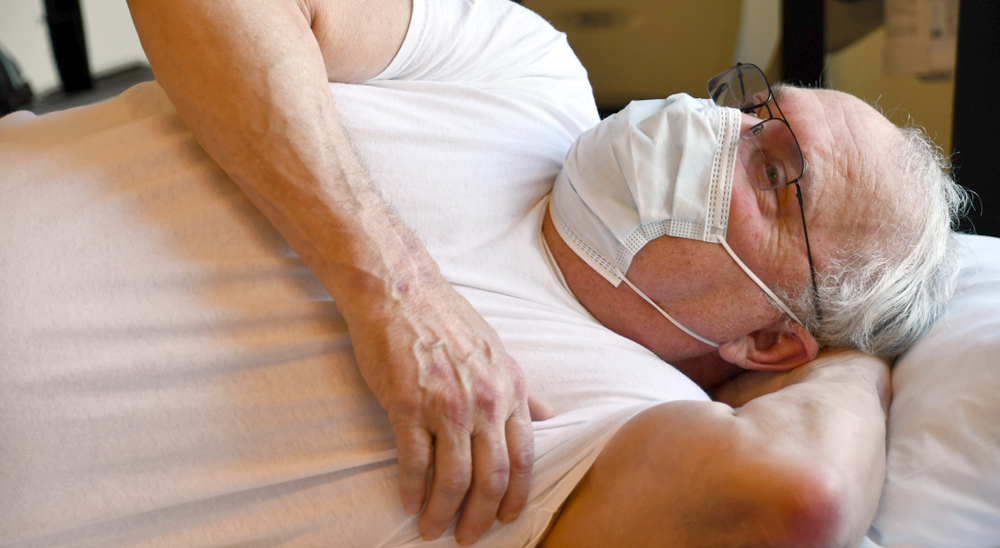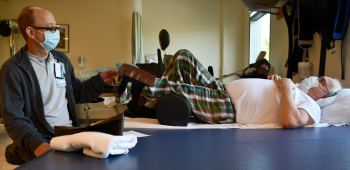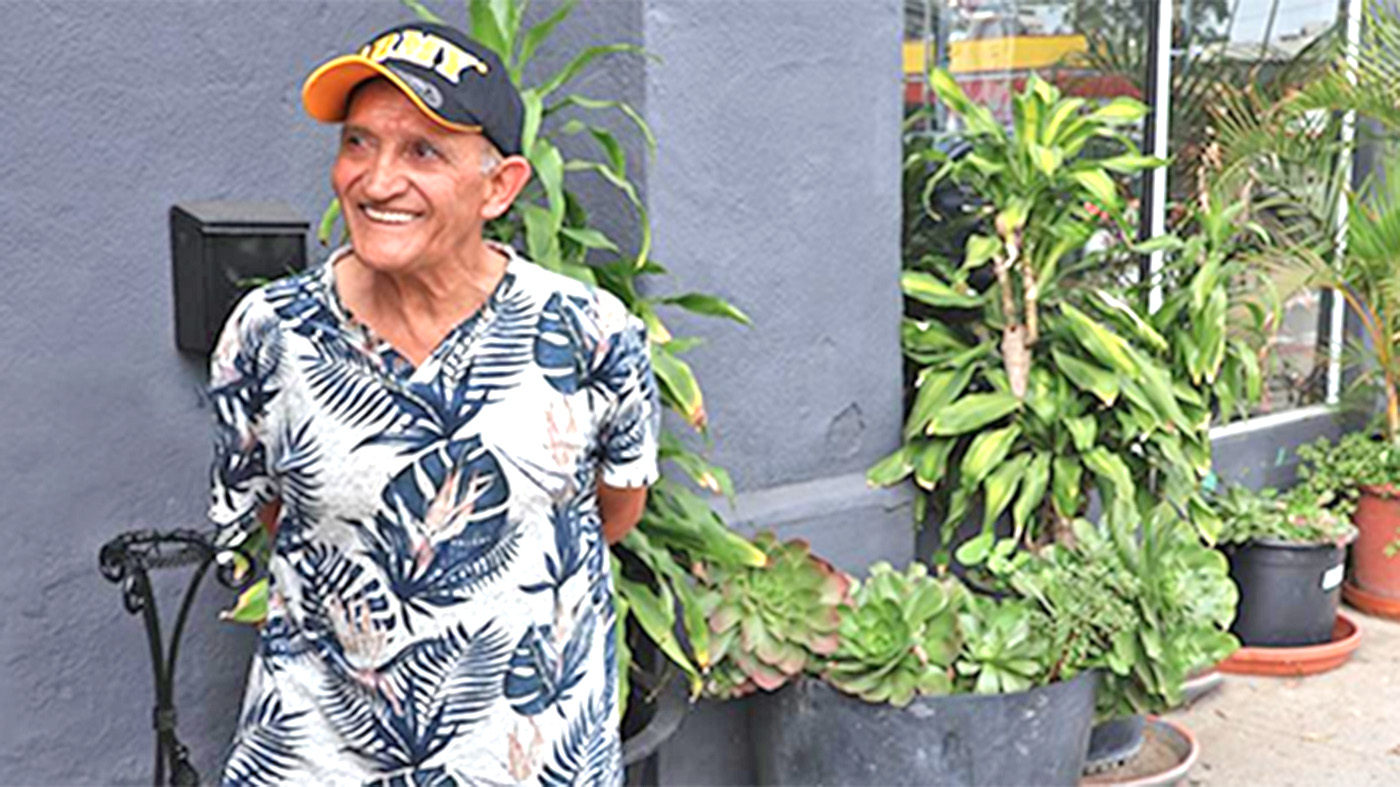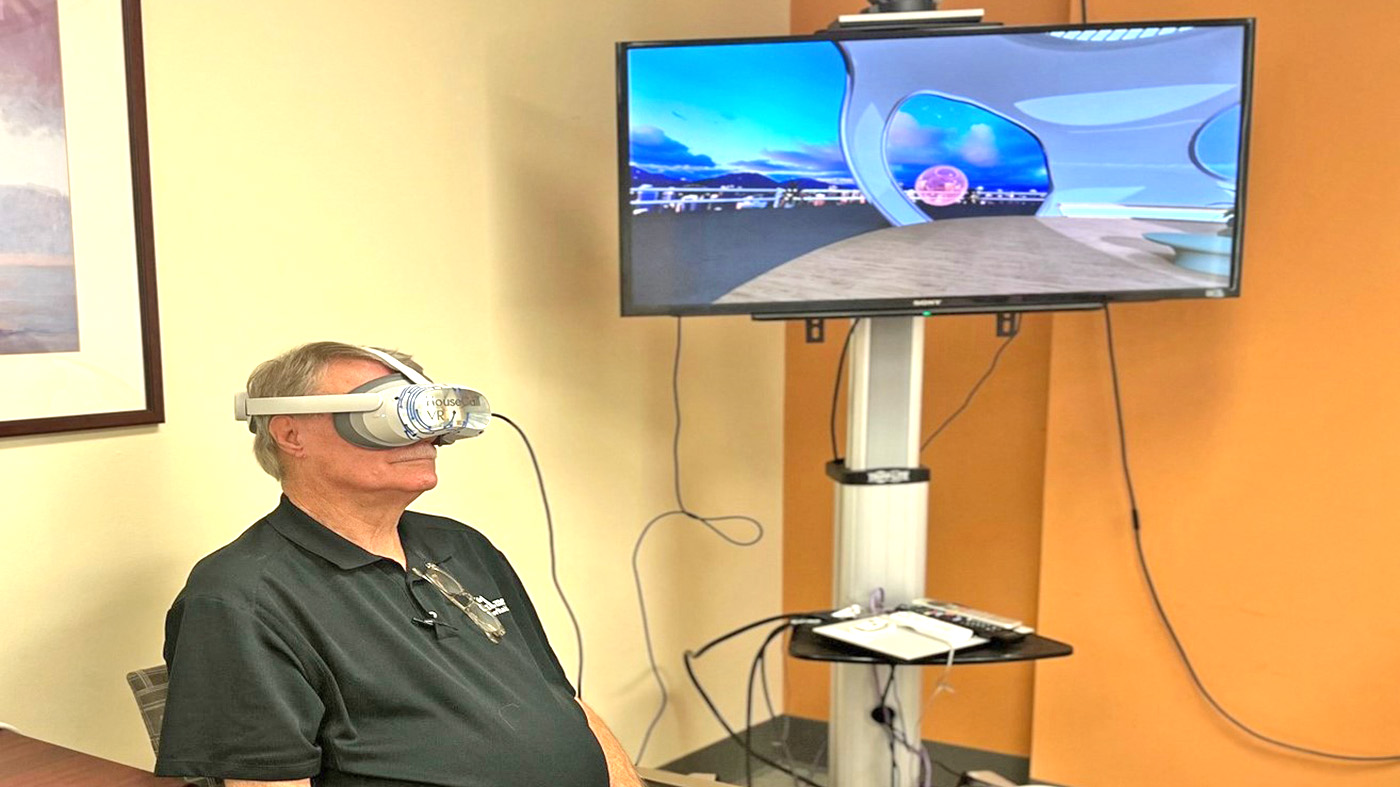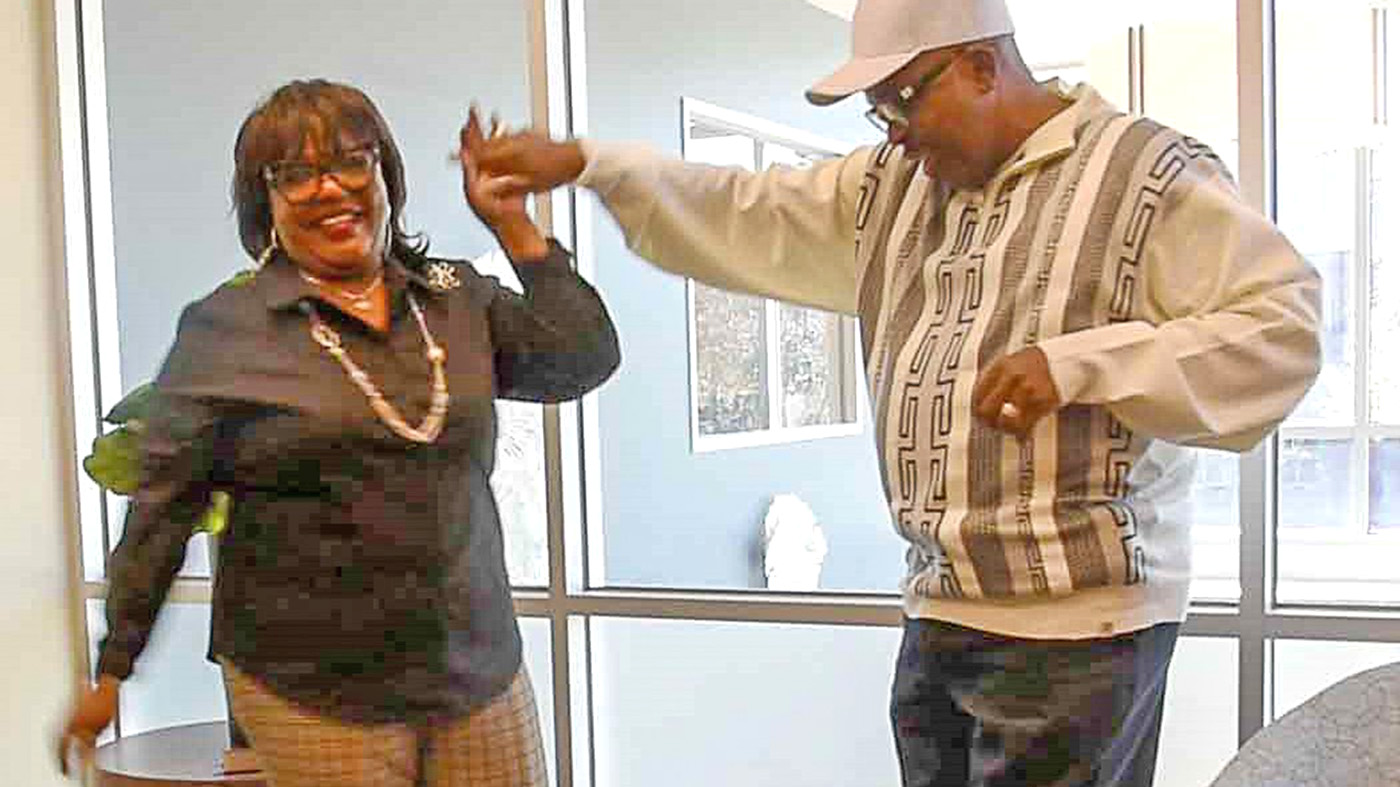In a quiet space on the second floor of Alaska VA Healthcare’s Anchorage clinic, two men talk casually about the upcoming hunting season. As they talk, one of them pulls out a strap of weights and begins to tie it around the other man’s calf. The man is just five weeks out of having his foot amputated. He is doing physical therapy so he can walk again.
Marine Corps Veteran Timothy Davis said he made the decision to have the operation after an infection threatened to travel up his limb.
“I live in the real world,” Davis said. “I deal with stuff head on, so it was a relatively easy decision. Once I made that decision, then it’s, ‘Okay, now how do I get back to being able to function and start being able to do the things I would like to do.’”
Getting back to fishing and hunting, let alone walking, is no easy task but one Davis hopes to achieve with physical therapy.
Retraining muscle memory
Working together with Air Force Veteran Michael Campbell, a physical therapy assistant, he comes in for 90-minute sessions. He does different exercises to strengthen both the amputated limb and the leg that will support him when he receives his new prosthetic.
Much of the difficulty comes from trying to retrain the muscle memory Davis had before the surgery.
“I can remember laying in bed right after they had done the amputation, starting to lift that leg and it just shot to the ceiling because all that weight was gone,” Davis said.
Physical therapy is ideal for preparing muscles of the body before surgery and getting things back on track after. Campbell said much of what physical therapy does involves stretching, strengthening, increasing flexibility, and improving one’s balance and gait, or the way a person walks.
“Whatever your surgery is going to be, we see if we can get you ready, get you through it, and then recover you after the fact,” Campbell said.
Motivation will help Veterans succeed
Davis still has a way to go before fully recovering but he is doing well at being consistent with his exercises. The time and effort he puts into physical therapy will help him recover much more quickly so he can get back to what he loves.
He said he believes the process of working through his exercises requires an attitude similar to what service members must have in boot camp. Without a positive attitude, he said he thinks most people would have washed out.
“The more motivated you are, the more likely you are to succeed,” Davis said. “It comes back to mindset and mindset in this instance, where you’ve lost a limb, is everything.”
For questions about physical therapy, talk to your primary care provider. Learn more at https://www.prosthetics.va.gov/PT/index.asp
Topics in this story
More Stories
Jimmy Villanueva is quick to flash a smile after his VA dental clinic helped him improve his oral health.
Gulf Coast VA hosted an innovator who is developing a virtual reality software designed to provide interactive diabetic patient education.
Army Veteran Larry Scales had his first heart attack in 1999. After his third heart attack he sought help at the Michael E. DeBakey VA.

